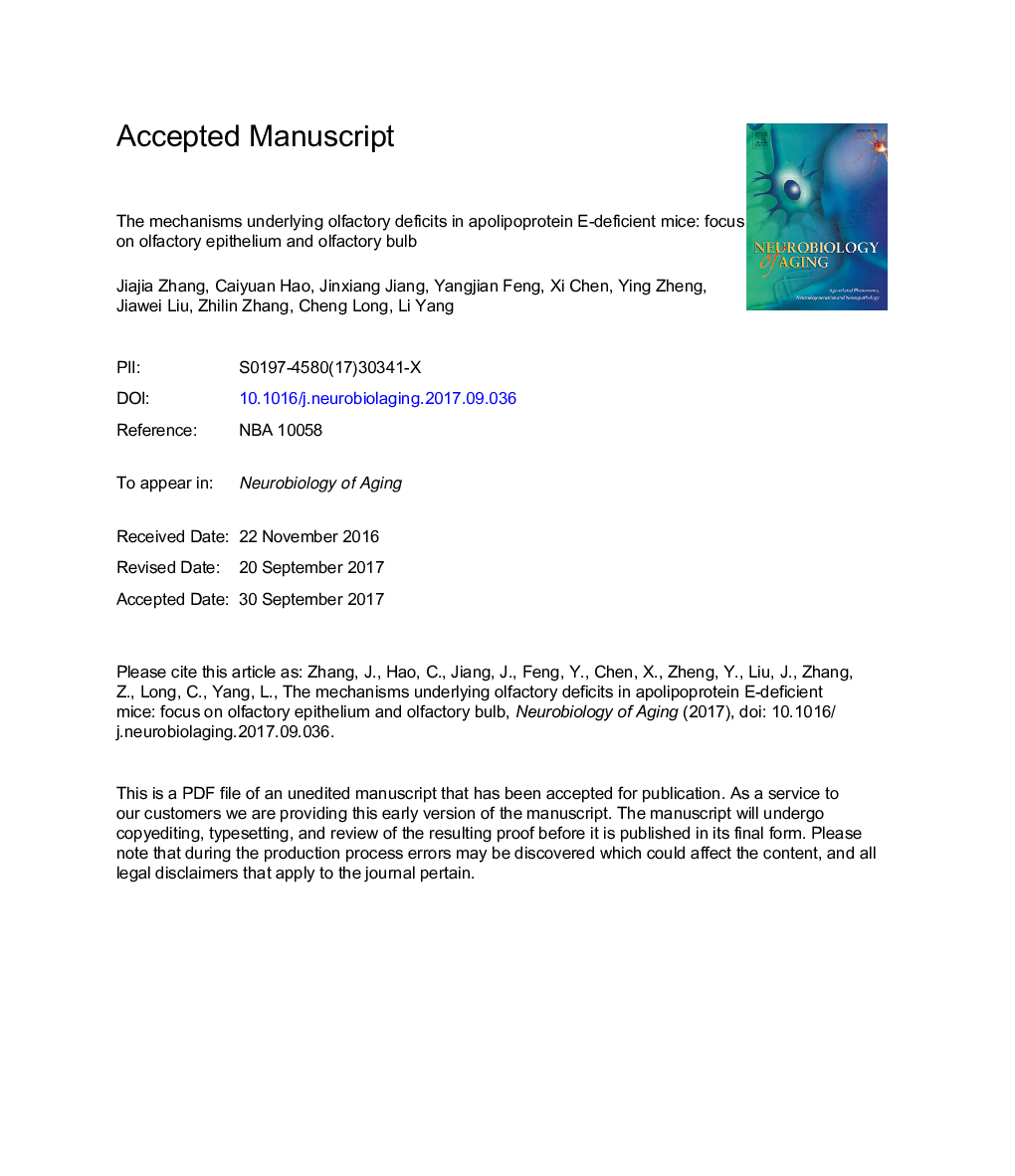| Article ID | Journal | Published Year | Pages | File Type |
|---|---|---|---|---|
| 6803099 | Neurobiology of Aging | 2018 | 45 Pages |
Abstract
Apolipoprotein E (ApoE) is highly expressed in the central nervous system including the olfactory epithelium (OE) and olfactory bulb (OB). ApoE induction is beneficial for Alzheimer's disease (AD) treatment, whereas ApoE deficiency results in impaired olfaction, but the timing and underlying molecular and cellular mechanisms of these effects remain unclear. Uncovering the mechanisms underlying olfactory dysfunction in ApoE-deficient mice might provide a potential avenue for the early diagnosis of AD. We used an ApoE knockout (ApoEâ/â) mouse model and a cookie-finding test to reveal an olfactory deficit in 3- to 5-month-old, but not 1- to 2-month-old, ApoEâ/â mice. Electrophysiological experiments indicated a significant decline in the electroolfactogram (EOG) amplitude, which was associated with an increase in rise time in ApoEâ/â mice. Knockout mice also exhibited compromised olfactory adaptation, as well as a reduced number of mature olfactory sensory neurons in the OE. Local field potential recording in the OB showed that gamma oscillation power was enhanced, which might be attributed to an increase in GABAergic inhibition mediated by parvalbumin-expressing (PV) interneurons. This study demonstrates the critical involvement of ApoE in olfactory information processing in the OE and OB. ApoE deficiency results in olfaction deficits in mice as young as 3Â months old, which has implications for AD pathogenesis.
Related Topics
Life Sciences
Biochemistry, Genetics and Molecular Biology
Ageing
Authors
Jiajia Zhang, Caiyuan Hao, Jinxiang Jiang, Yangjian Feng, Xi Chen, Ying Zheng, Jiawei Liu, Zhilin Zhang, Cheng Long, Li Yang,
